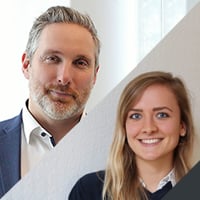xSuite Blog
Expert Knowledge on Digitalization & Automation of Business Processes

xSuite Blog
Expert Knowledge on Digitalization & Automation of Business Processes
Why Your SAP System of the Future Requires a Clean Core
Topic: AP Automation | S/4HANA | SAP

ERP world market leader SAP introduced its well-known legacy product R3 in 1992. xSuite was founded just two years later. Since then, much has changed. SAP customers have moved from R3 to its successor ECC and now face the next migration to S/4HANA. xSuite’s focus has shifted from setting up digital archives and scanning solutions for their clients to developing intelligent software for business process automation.
With a history of over 1,200 customer deployments, we at xSuite know one thing for sure: no two SAP systems are alike. This is because companies have always had the option of customizing their SAP ECC setup through so-called user exits. Replacing the default program supplied by SAP, user exits call a customized function. With user exits, businesses can create systems that fit their exact needs. Not surprisingly, this method of customization has been used intensively over the years. Indeed, according to a recent report published by PwC and smartShift, the average SAP system currently includes over 30,000 custom objects and over 3 million lines of custom code.
Yes, user exits do offer a significant advantage – that of allowing companies to tailor the software to their specific requirements; however, these custom functions also pose major challenges: every time SAP carries out an update, companies are uncertain of whether their customized functions will continue to work as intended. If the functions don’t run on the updated SAP system, then they must be adapted. This often involves a large amount of manual effort, and in the future it will involve even more.
With its program “RISE with SAP”, the ERP giant incentivizes its customers to accelerate their digital transformation and move their infrastructure to the cloud. The first step in this transformation journey is migration to SAP S/4HANA, the modern successor of SAP ECC. Standard deployment of S/4HANA covers a wide range of business processes – some of which may have been covered by customization in the past. This means that some of the processes currently deployed at customers via individual user exits are part of the standard SAP S/4HANA offering. The flip side of the coin, however, is that this standard S/4HANA offering is limited and excludes a large number of processes that may be customized at some companies. These processes will simply not be supported. This will lead to large process gaps.
Why has SAP changed its customization policies and limited the use of user exits in S/4HANA? The answer lies in the future scenario of the cloud as the standard deployment model for ERP software. In the future, when companies use SAP from the cloud, system and feature updates will be carried out centrally, meaning that every business connected to the cloud will receive all of them at the same time. In addition, updates will be available much more frequently due to ever-faster innovation cycles. To streamline this centralized process of upgrading the software, the core of the SAP system needs to be kept clean. It must only contain the default processes provided. Additional applications that were previously integrated into SAP ECC must now be built outside of the core and connected to the S/4HANA system from there. They must be set up on the SAP Business Technology Platform (BTP), the intended new home for custom processes and applications.
Many businesses have been putting off migration from SAP ECC to S/4HANA for many years because of its scope and complexity. If you are one of these businesses, consider our take on the matter: we are convinced that it is the perfect opportunity to challenge your current setup and examine any excess custom code that has been built up over the years (or even decades). You might discover that some code can be redesigned to cover new requirements, other code can be replaced with newer, more up-to-date solutions, and yet other code, which might have lost its relevance altogether, can simply be retired.
By applying this strategy, you can enjoy the following benefits of a clean core:
- Your business can take on future demands and you are already on your way in your digital journey toward the cloud.
- Deployment goes faster and upgrades are easier: A standardized setup with a clean core provides your business with new features as they become available, without the risk of custom processes no longer functioning on the upgraded system.
- Your business can innovate at market speed: Removing your SAP system of excess customizations frees you up to innovate and automate, making your business processes run faster and more efficiently.
Leveraging the migration to S/4HANA to reinvent your existing processes is your best bet for reducing complexity and maintaining a clean core. For more information on how we can help your business achieve this, check out our blog article on our “Forward to Standard” initiative or contact us now.
Topic
- AP Automation (28)
- Digitalization (28)
- SAP (18)
- Cloud (15)
- S/4HANA (10)
- E-Invoicing (9)
- Skills Shortage (6)
- Supplier Portal (6)
- AI and Machine Learning (5)
- Procurement (5)
- Invoice (5)
- GDPR (4)
- Software Development and Implementation (4)
- xSuite Group (4)
- Archiving (3)
- Usability and User Experience (3)
- RPA (2)
- Dynamic Discounting (1)
- Blockchain (1)
- Incoming Mail (1)


